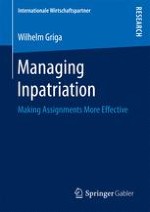2017 | Buch
Über dieses Buch
Wilhelm Griga explores benefits of inpatriation, issues, remediation strategies, and factors influencing inpatriate assignment effectiveness to better fulfill individual and organizational demands. The author covers inpatriation theory and presents empirical research results on inpatriates from China and USA in Germany. Antecedents to inpatriate’s competence build-up, goal achievement, and career development are explored and established. Significant insights and recommendations on the transfer of employees from foreign subsidiaries of multinational corporations to the headquarters of the parent company are provided.
Anzeige
